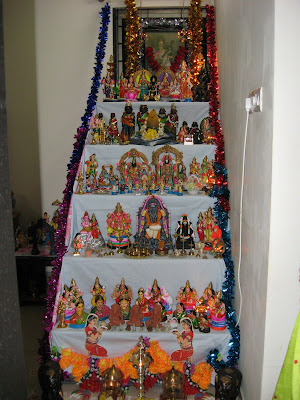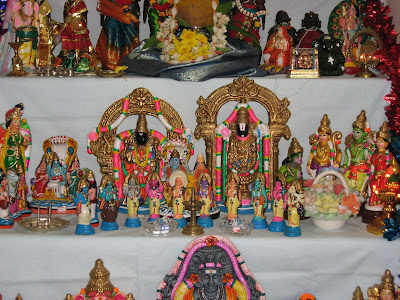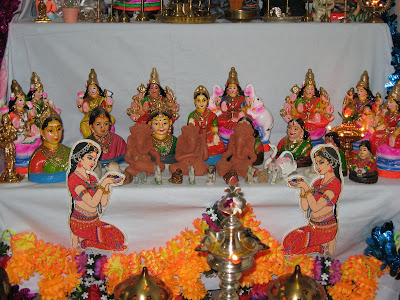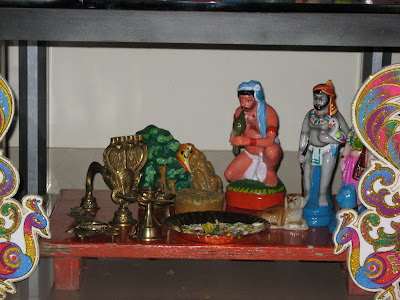The year was 1290 . A crowd had gathered around a clearing, where broken down pillars marked the presence of an ancient temple, now long gone. A young boy, just 14 years old, leaned against one of those pillars, deep in thought. Then, he began speaking, and the crowd fell silent, listening to his every word. He spoke without any notes, translating the Bhagavat Gita, from Sanskrit, which only the pundits knew, to the language everyone in the village knew and spoke – a variety of Prakrit which developed into the Marathi language. Even as he spoke, one of the men in the audience realized how momentous this event was, and how important this composition would be. He began writing down the words the young boy spoke, and this composition was named by its author and composer, the Bhavartha Deepika – the enlightening meaning (of the Bhagavat Gita). Now, the ancient, holy text, was no longer restricted to the pundits, but accessible to all, understood easily by them, composed as it was, in their...
The 30th was officially the first day of Navaratri, and wherever I went, I could see people bringing home the Devi. It signals the beginning of a hectic week, where we have to carry out our normal routines, while making time for prayers and Parayanams, attending Bhajans in the colony, and also finding time to visit the temple. Things were further complicated with Samhith’s classes, as well as my sister’s birthday. I had to have a quick darshan at the temple before rushing off to Thane to wish my sister.
The decoration at the temple depicted the Devi as LALITAMBIKAI, at the Thirumeeyachur temple, near Kumbakonam. This temple is about 13 Kms from Mayiladudurai, on the Mayiladudurai- Thiruvarur road, and is home to 2 Thevara Padal Petra Sthalams (i.e. 2 songs sung by the saints). The main deities here are Aruneswarar and Lalitambikai, who were worshipped by Surya the Sun God at this place. The Lalita Sahasranamam is said to have originated here from the Devi herself, and hence this is considered one of the holiest temples in this area.
Thanks to my visit to my mother’s place at Thane, I can share photos of a beautiful ‘Bommai Kolu’ with all of you.
The kolu is an elaborate affair at my mother’s place, and you can see that the whole room is covered with toys made of mud. To begin with, here are the traditional five steps……..
The top step (the fifth) is dedicated to the Devi in her various forms. At the outset, I must inform all readers that this is not the traditional way of distributing the images on the steps. In our house, it is simply an attempt to classify the idols we have and fit them on the shelves.
The fourth step has the main Kalasam, accompanied by the images of Men and Women made of wood, Over the years, my mother and aunt have collected enough such wooden dolls to fill a step by themselves. They put in a lot of time and effort to clothe and decorate these dolls, and the results are there for all of you to see and enjoy
.The third step is dedicated to Lord Vishnu in his various forms- the central idols are of Lord Venkateswara of Tirupati and his consort Padmavati. All the other idols are of His various incarnations, and the smaller idols in the front depict the Dasavatharam.
On the second step is the family of Lord Shiva- the central idol is one of Dakshinamoorthy. He is accompanied by images of Shiva and Parvati on the Rishabha Vahanam, and also images of His sons- Ganesha and Karthikeya. There is also an idol of Shirdi Sai Baba.
The first step has small images of gods and goddesses, mainly Ganesha and Gowri.
Due to lack of place on the steps, other idols have been placed all over the room – this table has been covered with images of Krishna - as a cowherd, with the gopikas, and even killing Kamsa.
This shelf is coved with the Chettiar Bommais – the grocers and merchants, with vessels and all kind of grains.
This one is of a snake-charmer……..
And this one is of a king of Thanjavur - Manu Neethi Chozhan, who was famed for his justice, and who made the right judgement for anyone who rang the bell outside his palace. When his son ran over a calf while riding his chariot, the cow came and rang the bell asking for justice. The righteous king judged that his son should be run over the same way in order to atone for his deed. The Gods, who had tried to test him this way, were pleased, and returned his son alive, as well as gave him a place in Heaven.
And finally, this one is of a group of musicians and performers.
With this I can call an end to the first day of Navaratri. Lets wait and watch what the forthcoming days bring.........
The decoration at the temple depicted the Devi as LALITAMBIKAI, at the Thirumeeyachur temple, near Kumbakonam. This temple is about 13 Kms from Mayiladudurai, on the Mayiladudurai- Thiruvarur road, and is home to 2 Thevara Padal Petra Sthalams (i.e. 2 songs sung by the saints). The main deities here are Aruneswarar and Lalitambikai, who were worshipped by Surya the Sun God at this place. The Lalita Sahasranamam is said to have originated here from the Devi herself, and hence this is considered one of the holiest temples in this area.
 |
| From Miscellaneous |
Thanks to my visit to my mother’s place at Thane, I can share photos of a beautiful ‘Bommai Kolu’ with all of you.
The kolu is an elaborate affair at my mother’s place, and you can see that the whole room is covered with toys made of mud. To begin with, here are the traditional five steps……..
 |
| From Miscellaneous |
The top step (the fifth) is dedicated to the Devi in her various forms. At the outset, I must inform all readers that this is not the traditional way of distributing the images on the steps. In our house, it is simply an attempt to classify the idols we have and fit them on the shelves.
 |
| From Miscellaneous |
 |
| From Miscellaneous |
 |
| From Miscellaneous |
 |
| From Miscellaneous |
The first step has small images of gods and goddesses, mainly Ganesha and Gowri.
 |
| From Miscellaneous |
Due to lack of place on the steps, other idols have been placed all over the room – this table has been covered with images of Krishna - as a cowherd, with the gopikas, and even killing Kamsa.
 |
| From Miscellaneous |
This shelf is coved with the Chettiar Bommais – the grocers and merchants, with vessels and all kind of grains.
 |
| From Miscellaneous |
This one is of a snake-charmer……..
 |
| From Miscellaneous |
And this one is of a king of Thanjavur - Manu Neethi Chozhan, who was famed for his justice, and who made the right judgement for anyone who rang the bell outside his palace. When his son ran over a calf while riding his chariot, the cow came and rang the bell asking for justice. The righteous king judged that his son should be run over the same way in order to atone for his deed. The Gods, who had tried to test him this way, were pleased, and returned his son alive, as well as gave him a place in Heaven.
 |
| From Miscellaneous |
And finally, this one is of a group of musicians and performers.
 |
| From Miscellaneous |
With this I can call an end to the first day of Navaratri. Lets wait and watch what the forthcoming days bring.........
What an eloborate Golu, Golu is very well celebrate festivities at my place, Feeling very much nostalgic hehe :) and U have shiradi sai baba!
ReplyDelete